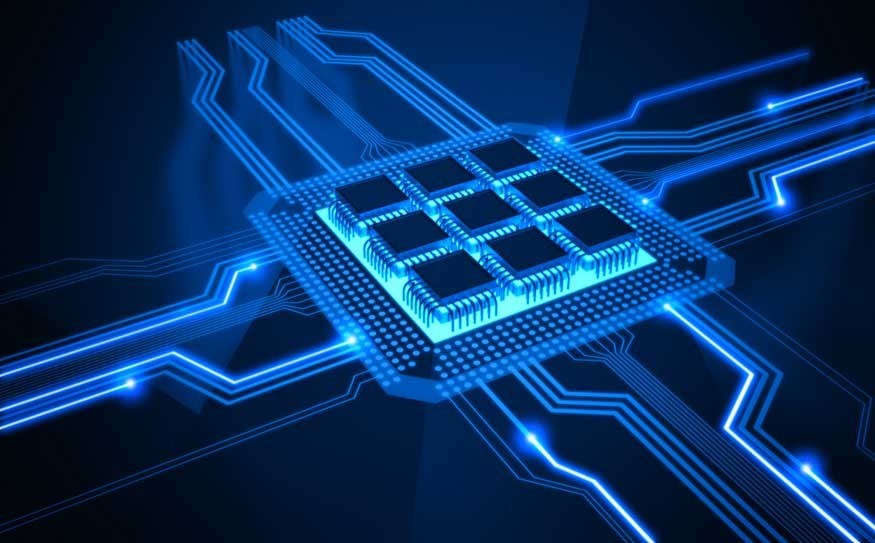There's an axiom in the high technology industry known as Moore's Law, a concept coined following a 1965 article by Intel co-founder Gordon E. Moore. He predicted that the pace of innovation would ensure that transistor intensity on integrated circuits — with tiny switches that read 1 for on or 0 for off to make binary computing possible — would more or less double every two years.
It was an unusually accurate prediction, especially when you consider that in Moore's day they didn't have sophisticated robotic chip printers or circuitry that could be measured in nanometres — one nanometer equalling one 10 millionth of a centimetre — to carry electrical impulses to transistors embedded in CPUs, memory chips and graphics processors.
A graph beginning in 1971 started with 2,300 transistors per chip: by 2011 has 2.6 billion. Moore's Law has been more or less perfect over 40 years, following a 45-degree line upward on the graph with the occasional dip and leap in technology skewing above and below that line.
Most of those upward skews have occurred in the last decade with the introduction of dual core, quad core and six core architecture.
The 10-Core Xeon chips introduced by Intel last year currently tops this chart, although even with that incredible leap forward it's still only slightly above that 45-degree line.
And just when it seems like the limitations of materials and processes we use to make microchips have been reached, innovation continues to push the limits even further.
In 1989 Intel released the first chips with nanometre lithography (the means by which circuitry is printed on a chip or board) with 800nm processors. Processors broke 100nm in 2002 with the first 90nm processors, followed by 65nm in 2006, 45nm in 2008 and now 32nm and 22nm in 2010 and 2011. Chips with 16nm circuits should follow in 2013, 11nm in 2015, 6nm in 2010 and 4nm in 2022. From there, who knows?
There are many benefits to thinner circuitry. They allow circuits to be placed closer together, increasing the possible density on a chip. They allow for miniaturization of processors, and more computing power on smaller devices. They use less power and produce less heat — an innovation that lets computers with i7 processors overclock their systems without fear of overheating.
Now IBM and others are experimenting with laser-light based processors and transistors. They will likely be bigger and bulkier at first than copper-based circuits, but they will be quite a lot faster (probably 100 times faster at first), will use far less energy and could make heat issues and fans a thing of the past.
It's a work in progress, as is Intel's 80-core Terascale project — both of which could change computing and processor design if they prove to be feasible outside the lab.
For consumers, the good news is that we're close to the release (second quarter 2012) of Ivy Bridge, the 22nm upgrade to the 32nm Sandy Bridge architecture available today in Intel Core, Intel Pentium and Intel Xeon CPUs.
The new Ivy Bridge processors are expected to be around 37 per cent more power efficient than Sandy Bridge, which is good news for laptops, tablets and phones. They also provide mobile devices with more graphics processing power, as most portable devices don't have a dedicated graphics accelerator — the exception being video-game specific devices like the Playstation Vita.
AMD, which has held the processing lead at times over the years, is continuing to innovate as well. Its big announcement is the Z series chip, which will debut in Windows 8 tablets and possibly phones in the near future. They have 32nm architecture and the design includes a built-in graphic processor unit (GPU) that reportedly can support Direct 11 graphic standards.
In other words, a mere tablet would theoretically be able to render a game like Crysis 2.
For laptops and desktops, AMD is only slightly behind Intel and Sandy Bridge when it comes to CPU speeds, although their Llano CPUs are also being coupled with onboard GPUs that are superior to what Intel is offering. That's going to attract the attention of gamers, 3D modellers and others that prioritize graphics processing.
Before you buy a new gadget or computer, my advice is to go online and read up on the specs — including the CPU and GPU — to ensure you're getting the best processor for your money, the best performance with the longest battery life. It can also help you decide when to buy — why invest in a computer with a Sandy Bridge i7 today, for example, if — assuming money is no object — you can get a more efficient Ivy Bridge system in six months?
Journey is fastest-selling PSN game
The small, independent, atmospheric desert puzzle game that is Journey is now the fastest selling game of all time on the Playstation Network. There are no actual figures to go with that assertion, by Sony is confirming it. If you have a PS3 the game costs $14.99 and based on reviews it's well worth it — just watch some gameplay videos online at YouTube first to make sure this is your cup of tea.




